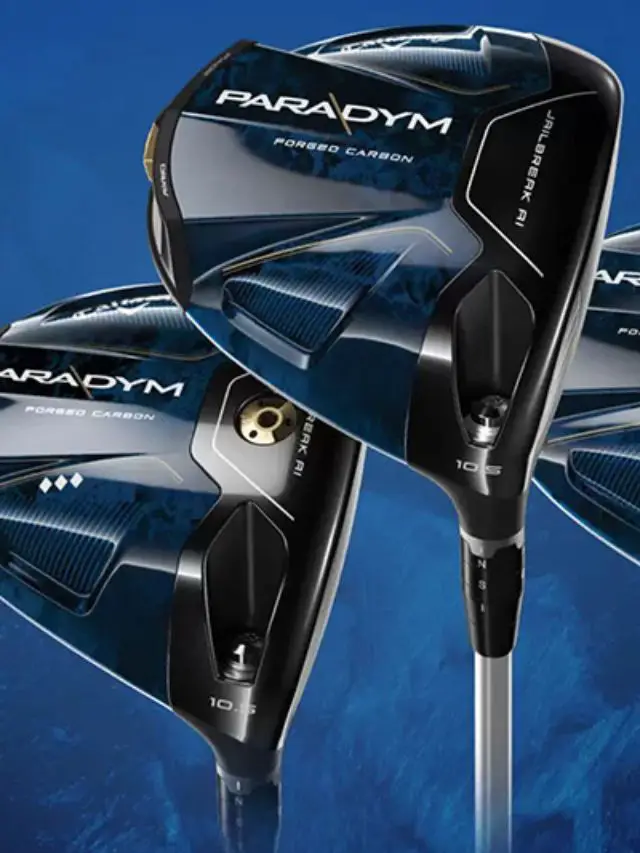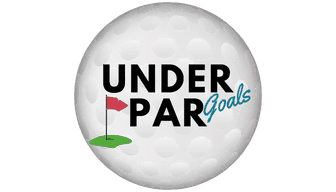If you’re just getting started then you need a driver that will keep the ball in the fairway and give you respectable distance even when you don’t hit it on the sweet spot.
With this in mind, I took a look at dozens of drivers and I think the best driver for beginners is the Ping G430 Max.
But that’s not the only option out there for you, here’s my breakdown of your best options…
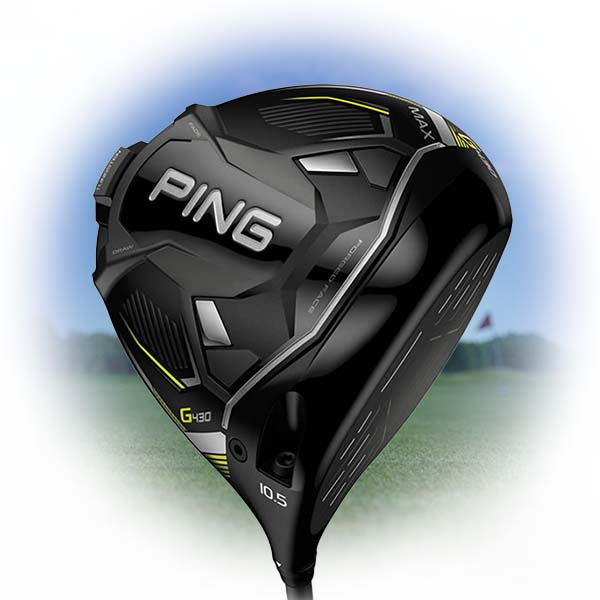
1. Ping G430 Max
As one of the most forgiving drivers on the market, the Ping G430 Max is perfect for beginners that are just learning how to hit the sweet spot consistently.
Ping is one of those companies that quietly produces some top-level gear without the advertising fanfare of some of the other companies. The Ping G430 is one of those clubs that you don’t hear much about but should be hard to ignore.
The G430 is an upgrade from the previous G425 which was one of the most forgiving clubs on the market. While it’s not a massive upgrade, Ping did a great job of maintaining all the good things about the G425 and making some small improvements.
Ping G430 Max Specs
- Lofts: 9°, 10.5°, 12°
- Lie: 58.5° (adjustable from -1° to +2°)
- Head Size: 460cc
- Swing Weight: D3
- Adjustable Hosel: Yes (-1.5° to +1.5° loft)
- Adjustable Weights: Yes (25g rear movable)
- Stock Shafts:
- PING Alta CB Black 55 (56g, 57g, 60g)
- PING Tour 2.0 Chrome 65 (56g, 61g, 66g)
- PING Tour 2.0 Black 65 (60g, 66g)
- Mitsubishi Kai’Li White 60 (65g, 66g)
- HZRDUS Smoke Red RDX 50 (50g, 51g)
- HZRDUS Smoke Red RDX 60 (60g, 61g)
According to Ping, the G430 is longer than its predecessor. In my testing, it was, but only by a very small amount (which could have just been attributable to variances in my swing).
That being said, they certainly improved on the sound of the club. The G425 was not a pleasant sound but the G430 has a nice muted crunch that makes you feel good about your strike. This may not directly affect your shot, but it can help the confidence a little.
It has a rear weight (26g) and gives you the option to move the weight to change the club to have either a draw, fade, or neutral bias. This makes it a great option for those of you want a little help controlling the side spin.
One last note for those of you on a budget, since there isn’t a huge difference in performance between the clubs, you could save some money and go for last year’s Ping G425 Max.
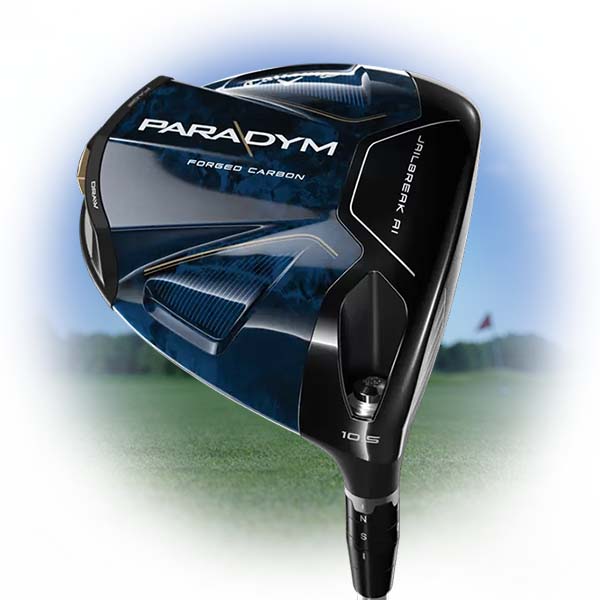
2. Callaway Paradym
The Paradym is the latest and greatest from Callaway and if it’s within your budget might be the best combination of length and forgiveness on the market today.
When I first tested the new Callaway Paradym I thought maybe the launch monitor was wrong. But after going back to my old driver for a few swings I was able to confirm that this driver was absolutely launching the ball.
I was getting great ball speed and distance numbers, even when I missed the sweet spot. This club and the next pick below really outpaced the rest of them in terms of forgiveness and ball speed on mis-hits.
Callaway Paradym Specs
- Lofts: 9°, 10.5°, 12° (Adjustable -1°, +1°, 0° and +2°)
- Lie: 57° (adjustable from -1° to +2°)
- Head Size: 460cc
- Swing Weight: D3
- Adjustable Hosel: Yes
- Adjustable Weights: Yes (15g Sliding Weight)
- Stock Shafts:
- Aldila Ascent PL Blue 40 Graphite
- Project X HZRDUS Gen 4 Silver 50 Graphite
- Project X HZRDUS Gen 4 Silver 60 Graphite
- Project X HZRDUS Gen 4 Black 60 Graphite
- Fujikura Ventus TR Blue 6 Graphite
The only reason this club is in second place is that at $600 MSRP, it may not be the most sensible purchase for most beginners, although they would certainly benefit from it. In addition, I think the Ping G430 Max is just a little more forgiving on mishits even though it doesn’t go as far as the Paradym on well-struck shots.
Pros
- High MOI and lots of forgiveness
- Good ball speed off the face
- The somewhat classic look is much more appealing than other Callaway drivers
Cons
- Very expensive
The Rogue ST Max also comes in a “draw” version for those of you that tend to slice the ball. Generally, I am not a fan of draw bias drivers because I think they encourage bad swing habits, but if you’re a high handicapper with a slice that just wants to have fun on the weekends and not work on improving your swing, then the draw version of this club is the perfect option for you.
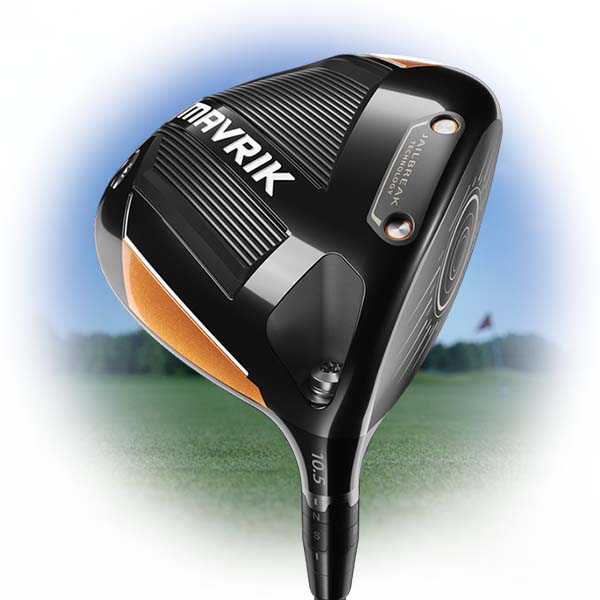
3. Callaway MAVRIK
The MAVRIK was a massive success for Callaway when it first came out and still beats many of today’s drivers in terms of distance and forgiveness.
The Callaway Mavrik is a couple years old at this point but still packs some of the best technology on the market that will help beginners make the most of their current swing while allowing them to maximize their potential as they improve.
On the sole of the Callaway Mavrik Max, you have two interchangeable weights that can help with MOI for forgiveness or help with a slice. At one setting it is designed to enhance forgiveness and the other weight placement adds a strong draw bias.
The upside of having this choice, you can regularly flip flop between the two to reflect how your game is going off the tee.
To generate more swing speed you usually need to swing faster. But Mavrik has a design that can help you squeeze out a few more mph without any additional effort.
Just like the Big Bertha B21 before it, the Mavrik Max has a T2C Triaxial Carbon Crown and jailbreak technology. Yet another way that the Mavrik Max helps to generate more swing and ball speed, these features work together to make the club more aerodynamic and help keep ball speed up even on mishits.
The bottom line is that you’re going to get excellent results with the Mavrik without having to spend big bucks for a current model driver.
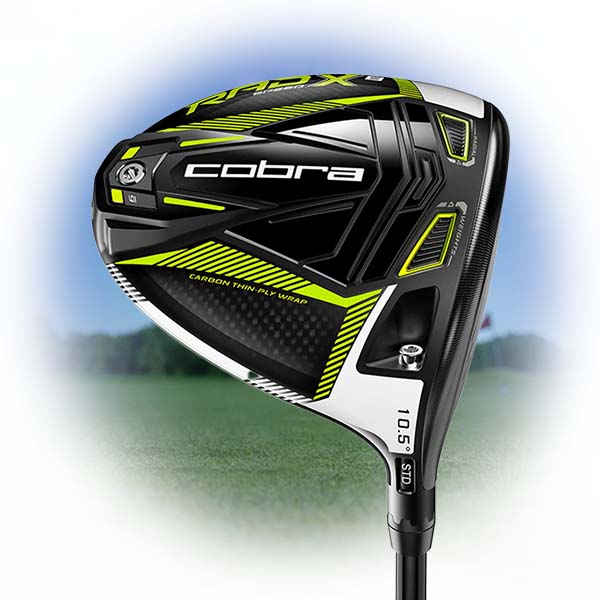
4. Cobra RADSpeed XB
The RADSpeed XB is designed specifically for high handicappers with a high launch, low spin, and lots of forgiveness. With a recent price drop, it’s a great bargain too.
Perhaps you’re the type of player who is looking to upgrade the driver in your bag, but don’t necessarily want to break the bank to do so. We would encourage you to consider the Cobra RADSpeed driver.
The RADSpeed XB is the model in the RADSpeed lineup that has a bigger footprint and more weight towards the rear which makes it more forgiving and has a higher launch. It also features an internal weight pad positioned low and back to promote higher launch and straighter ball flights.
Beginners probably should avoid the “regular” RADSpeed driver as it is less forgiving than the XB.
One thing to be aware of with this club is that it is louder than most. Whether or not you like that is more of a personal preference thing than it is related to actual driver performance. But I have heard some golfers say that a louder sound makes them feel confident hitting the driver and makes them swing smoother because they don’t feel the need to kill it to get that big sound.
Like most of the clubs on this list, this one is also adjustable so you can get a pro to help you dial in the right settings to maximize your distance and help correct some ball flight issues.
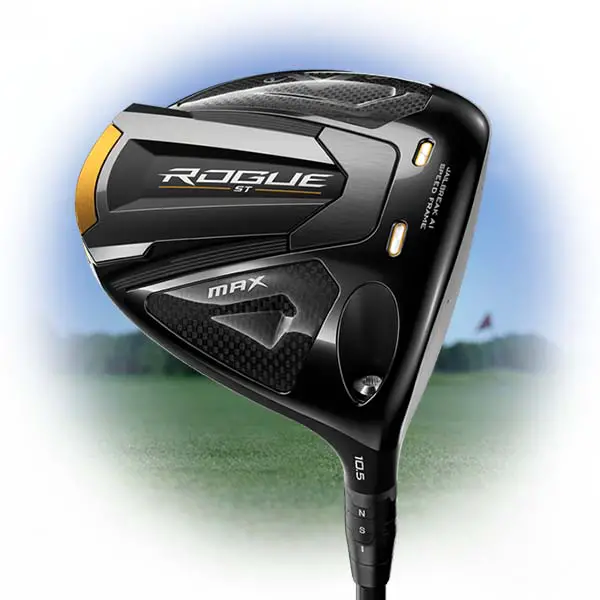
5. Callaway Rogue ST Max D
Callaway makes a lot of good clubs. But, there’s no better club for getting rid of a slice than the Rogue ST Max.
For a golfer struggling with shot shape, you might need a little assistance. Whether you’re trying to eliminate a small slice or add a few yards through a baby draw, the Callaway Rogue ST Max is ready.
Callaway Rogue ST Max Specs
- Lofts: 9° (Adjustable 8°-11°), 10.5° (Adjustable 9.5°-12.5°), 12° (Adjustable 11°-14°)
- Lie: 59° (adjustable from -1° to +2°)
- Head Size: 460cc
- Swing Weight: D3
- Adjustable Hosel: Yes
- Adjustable Weights: No
- Stock Shafts:
- Mitsubishi Tensei AV Blue 55 Graphite 55g
- Mitsubishi Tensei AV Blue 65 Graphite 65g
- Mitsubishi Tensei AV White 65 Graphite 65g
- Fujikura Ventus Blue 5 (non-velocore) Graphite 50g
- Fujikura Ventus Blue 6 (non-velocore) Graphite 60g
With this club, it’s all about weight. Here, you can place up to 26 grams of weight in the clubhead that ultimately controls the center of gravity.
Pros
- Multiple loft options (which are also adjustable) for right and left-handed golfers
- Some of the lowest spin levels you’ll find on a premium driver.
Cons
- Not an option for high handicappers looking for substantial help.
At max-weight, you have a low center of gravity towards the back of the club. This effectively enlarges the sweet spot and becomes more forgiving of contact at the heel—a big help for eliminating a slice.
Check out my full review of the Callaway Rogue ST Max D here.

6. Titleist TSi 1
The TSi1 is built to be light and makes it much easier for slower swing-speed players to generate club speed.
The Titleist TSi 1 is a lightweight driver with a design tailored to increase swing speed regardless of what yours is when you start. In other words, playing this driver is an almost guaranteed solution for adding a little bit of juice to your tee game.
Titleist tsI 1 Specs
- Lofts: 9°, 10°, 12° (10° only for left-handed)
- Lie: 58.5°
- Head Size: 460cc
- Adjustable Hosel: Yes
- Adjustable Weights: No
- Stock Shafts:
- Aldila Ascent UL 41g, 44g, 47g, 48g
One of the most important parts of the club is the shaft. The TSR2 driver has a graphite shaft which is very lightweight and strong. This helps the clubhead move faster through the air and hit the ball harder. The club also has a special grip that helps you hold the club tighter and make sure your hands don’t slip when you swing.
The TSR2 driver also has a few adjustable parts that can be changed to fit your swing. The adjustable hosel allows you to change the angle of the club head, which can help you hit the ball straighter or with more of a draw or fade.
The adjustable weighting system allows you to move weight around the clubhead to change the balance and feel of the club. This can help you find the perfect setup for your swing.
How We Choose Drivers
There’s no “best” driver for everyone. That’s why I break down these buying guides by categories like this one that covers the best drivers for high handicappers.
My goal is to give you options that fit your specific needs and golf skill level. Some clubs are designed for a specific skill level or type of player and choosing a club that fits your game is far more important than choosing the “best” club because all the top clubs are equally good in terms of quality.
With that in mind, I also test every club on this list so I can have hands-on experience with the club to tell you about things that aren’t in the marketing materials like feel and how it looks at address.
I am not a professional golfer so my testing isn’t the same kind of testing a swing robot will give you, but I do take note of how clubs perform on less-than-perfect contact. My goal is to give you an idea of how these clubs perform in real life.
3 Drivers Beginners Should Avoid
TaylorMade Stealth and Stealth 2
There was a lot of hype around the first Stealth driver because of its carbon face and the claims about forgiveness and distance.
But unfortunately, the Stealth (and now the Stealth 2) really don’t live up to the hype. The Stealth did give you good distance IF you hit the center of the clubface, but it lacked the forgiveness of other clubs on the market so if you mis hit it, you lost of lot of yards.
That alone makes it a terrible candidate for beginners.
Titleist TSR3
The TSR 3 isn’t a bad driver. But it’s not designed for high handicappers.
You might get more distance on sweet spot hits but you’ll lose a lot more on shots that don’t hit the center of the clubface.
In addition, this club is designed for a lower ball flight. This may be great for a good player that has an optimized attack angle on their drives, but for the high handicapper, this means a lot less distance on most hits.
Powerbilt TPS Supertech
I am only listing this club here because I have seen it recommended for beginner players on other sites.
The biggest appeal of this club is the low cost. But unfortunately, this is a case of getting what you pay for. If you’re here looking for a club that can improve your game, this isn’t it.
You’ll be much better off keeping your current driver and saving up for a used copy of one of the clubs listed above. You can find some great deals on the used market and you’ll get far better results than with a low-budget club like this.
What High Handicap Golfers Should Look For In a Driver
As a beginner, there are certain things you should look for when choosing a driver. What works for a pro or a scratch golfer can be a huge negative for a beginner.
Some of the major factors you should be considering are forgiveness, adjustability, and affordability. This guide explains why each one is important for you as well as a few other things you should be aware of.
If you are just looking to get started with golf and want to test the waters a little bit, check out our Callaway Strata Review, it’s a complete set that is perfect for beginners.
And once you have your driver, you can also read about the Best Irons For Beginners too.
Forgiveness
Perhaps this goes without saying…. But as a high handicapper, this attribute should be priority number one as you’re looking for the right driver for your game.
Forgiveness in a driver means that you can still get decent distance and accuracy on your shot even when you don’t hit the ball in the center (or sweet spot) of the clubface.
Typically, the further you miss that spot when you strike a ball, the slower the ball comes off the clubface which means less distance. A miss-hit can also cause a ball to spin to the right or left causing a hook or slice.
All of the major golf club manufacturers know that this is of utmost importance to the amateur golfer. It’s the “white whale” of the industry…. a never-ending pursuit. So these days it’s pretty hard to find a driver that WON’T be marketed as “forgiving”.
But it’s the subtle differences in forgiveness between the various drivers available out there that can be important for the high handicapper. So I recommend a couple of things –
(1) Get familiar with your most common misses. Employ the use of impact tape and figure out where you tend to strike the clubface with your tee shots (On the toe? The heel? Etc.). Knowing this can be helpful for you as you shop for a new club.
(2) Try before you buy. Most golf stores today offer the opportunity for you to test out the new clubs that they carry on a launch monitor or simulator, with no expectation of purchase. So take advantage of this and take your top few choices for a test drive. This will almost certainly be an enlightening exercise and should point you toward the driver that offers the most forgiveness to your particular golf swing.
Modern-day drivers are designed with a large clubface so that the sweet spot is much larger than it used to be and even when you do miss it, the effects aren’t as harsh.
Adjustability
Being able to adjust the loft of your driver is a great innovation that has become very prevalent in the last few years.
Adjustability can be a huge help to a beginner golfer. In fact, for a beginner, I wouldn’t recommend buying a driver at all if it was not adjustable. You simply don’t have a consistent enough golf swing to get perfectly fitted and locked into a driver that doesn’t adjust.
As you learn the game and your swing improves, you may want to experiment with a higher or lower loft. Many drivers also can adjust the lie angle as well.
Affordability
If you are just getting into golf then the prices of some of the popular drivers out there can be pretty intimidating. You may just want to test the waters to see if you enjoy the game (you probably will…but still).
In addition to that, as you improve, your skill may outgrow the first driver you picked out. There are ways to offset the upgrade cost, like selling your old club on eBay. But generally speaking, you probably want to keep the price of a driver reasonable.
Don’t worry, we’ve got you covered with some options below at different price ranges.
Low Spin
You may watch the pros on TV hitting wedges that pull back as soon as they hit the green and think putting a lot of spin on a ball is great! But when it comes to driving the ball far and straight, spin is your enemy.
The good news is that club manufacturers are getting really good at creating clubheads that don’t cause a lot of backspin on drives. I put this at the bottom of the list because all the clubs recommended below are going to be just fine when it comes to spin so you should really worry more about the other factors above.
Shaft Selection
As a beginner, you may not realize that the shaft is often as important or more important than the head of the club.
You need to make sure you choose a shaft that fits your swing speed. Most of you should be looking at a regular flex shaft unless you swing the club faster than most beginners.
However, keep in mind that a fast swing speed isn’t helpful if you can’t hit the ball straight. So you may want to go with the regular flex shaft and swing a little more in control until your skill improves.
Don’t Be Afraid Of Higher Loft
As a beginner, you should always err on the side of a higher loft when choosing a driver. There are two reasons for this.
First, you will probably hit the ball farther with a higher loft. Many beginners simply aren’t generating enough swing speed to get decent distance out of a low lofted driver. Higher loft means more time in the air and more distance. As your swing speed increases, you can experiment with lower lofts to see if they give you more distance. But most golfers tend to go too low too soon…and their results suffer.
Second, more loft will tend to create backspin instead of sidespin. I know we said earlier that backspin was bad for distance, but it’s still a lot better than sidespin that sends the ball into the woods. A higher lofted driver will have a tendency to counteract that side spin a little bit. That means fewer lost balls and higher scores. You still want to work on whatever swing fault is causing the slice, but as a beginner, a little extra loft will help.

